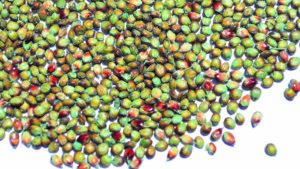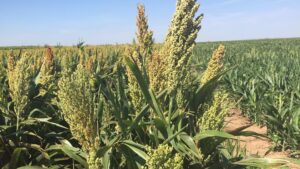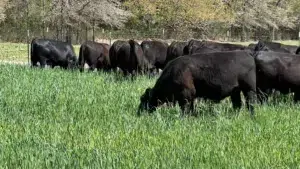Leading the charge in forage and specialty crop proprietary seed development and distribution, Sacramento, Cali., headquartered, S&W Seed Company recently set its sights on grain and forage sorghum and the market opportunities the varieties will undoubtedly provide.
Already a well-respected source for premium alfalfa seed, S&W recognized the seed market potential and the synergies that exist within the marketplace between sorghum and alfalfa. In 2016, S&W Seed Company acquired SV Genetics (SVG), gaining access to the SVG portfolio of forage and grain sorghum genetics, creating leveraging opportunities to vertically integrate those genetics within the established S&W distribution chain.
“SVGenetics brought them S&W research and development and provided a global footprint with our marketing programs and licensees in several countries that were already producing and marketing SV Genetics hybrids,” says David Holman, co-founder of SV Genetics with business partner Alan Scott. “It was a good fit—we had customers who were interested in alfalfa and they had customers who were interested in sorghum and sunflower.”
Founded in 2010, SV Genetics’ work focused on the development of new sorghum varieties, using a very diverse germplasm from many countries. Building on that diversity, SVG was able to develop varieties that are unique to those that farmers can acquire in the U.S., providing shorter maturing and drought tolerant varieties.
Through the acquisition of SVG, S&W currently offers a large portfolio of both grain and forage sorghums, marketing in South Africa, Australia, Brazil, Bolivia, Botswana and Argentina, and has plans to begin production of sorghum sudan and grain sorghum strip trials in the U.S. during the 2018 growing season.
Holman notes that because of the strict import requirements of the U.S., S&W has been unable to export sorghum from Australia to the U.S., forcing the company to use South America as a breech—producing the sorghum in South America and then importing to the U.S.
“It has taken time to get a system in place, but now that we actually have production and germplasm in the U.S. it [sorghum varieties reaching commercial markets] will be a much faster process.”
Hybrids slated for evaluation include varieties with marked resistance to sugar cane aphids and drought tolerance. Parent seed production is currently underway in Idaho, with commercial production scheduled in Texas and Kansas in 2018.
S&W’s investment in sorghum follows an increasing industry trend marking an uptick in sorghum production after several years of stationary production acres and an exodus of private industry investment in the early 1990s. New advancements in biofuel technology, genetic development and a growing health-conscious consumer interest in incorporating sorghum as a staple in a heart-healthy diet, has led to nearly a 100 billion dollar investment in the industry over the past three years.
S&W Seed’s Chief Marketing and Technology Officer, Dan Gardner, provides that sorghum has a lot to offer and will continue to gain traction in the agriculture economy, as more production acres are forced to shift to marginal lands.
“The future of sorghum is based on its flexibility as a crop, and its ability to address difficult field situations that would be limiting for other species like corn. For instance, in an area that’s low on water, sorghum has an ability to fill a niche there, and in areas that have difficult soils or other challenging farming conditions, sorghum always has a fit, whether that be to provide feed, fuel or fiber.”













